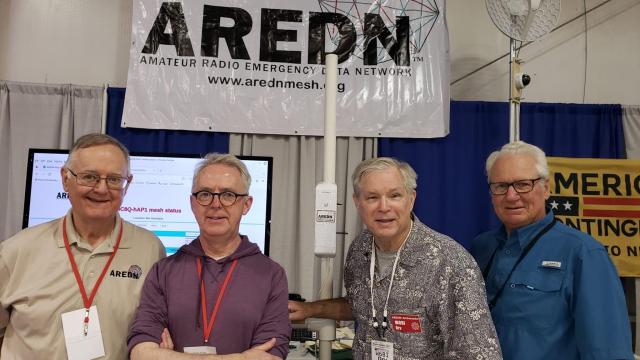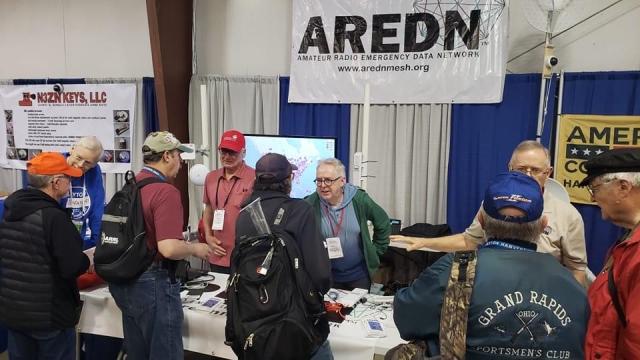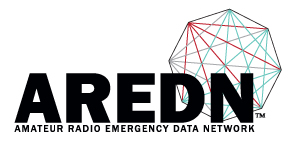There are NO alerts at this time.
Alerts
News
AREDN Release 3.23.8.0 Available
There have been over 70 nightly releases of the AREDN codebase since the last production release in April of 2023. Here are the highlights of the latest production release:
Enhancements
-
Added Prometheus Metrics (meant for use with monitoring apps like Grafana)
-
SSH, TELNET and HTTP access to a node via the WAN port can now be disabled from the advanced configuration page.
-
Improved handling of unsupported hardware.
-
Use wifi assoc list when looking for unresponsive nodes
-
Allow MTU on wifi interface to be modified
-
Minor wifi monitor improvements for better metrics reporting
-
Merge all the station monitoring and mitigation into a single service
-
Support xlinks on x86
-
Remove subnet restrictions for xlinks
-
Support switching mesh radio on multi-radio devices
-
UI improvements from AB7PA
-
Upgrade to OpenWRT 22.03.5...
Hamvention 2023 Recap

Thank you to all who visited us at Hamvention 2023 in Xenia, Ohio this past weekend. We enjoyed seeing you, listening to your success stories and answering your questions.
Orv W6BI gave a well-attended presentation on Saturday. Some of his past presentations are available on YouTube. Just search for Orv W6BI to find them.
A very special thanks to our local hosts and support team, Chuck NC8Q and Bill WA8APD. They were instrumental in setting up our booth. Chuck also provided access to the Miami Valley AREDN network to demonstrate live streaming video and VoIP telephony. Bill hoisted our AREDN banner high overhead so that it could be seen from most of the building. Thanks to to Kiley KD8DRX who answered a lot of questions in the booth on Friday.
We also experienced one of the rarest Hamvention weather conditions ever - no rain during Hamvention show hours during all three days!
Thanks from the AREDN Hamvention team,
Randy WU2S
Orv W6BI
Tim KN6PLV

...
Nightly Build filename change
Starting May 6, 2023 nightly builds will have a filename format that includes the build date rather than the job ID.
Like this: aredn-20230506-xxxxxx.bin
AREDN Release Notes 3.23.4.0
Summary
There have been over 140 nightly releases of the AREDN codebase since the last production release in December 2022. Here are the highlights:
Major Enhancements
- Support for the ‘AC’ class of radio[2]
- Improved service validation
- Improved WiFi scanning
- Better error feedback for future upgrades
- Hidden and Exposed node handling[3]
- Enhance AP and WiFi Client channel selection
- Support for easier “nightly build” testing
- Upgraded to OpenWRT 22.03.3; the latest release of OpenWRT with many security and bug fixes.
- Upgraded to Linux kernel 5.10.161
IMPORTANT NOTE!
Because of changes in the way OpenWRT names devices, this upgrade is not simple to revert without reinstalling your node as if you just took it out of the box.
New Devices
-
Ubiquiti[1]
- LiteAP 5 AC
- LiteBeam AC5 Gen2
- NanoBeam AC 5 (WA)
- NanoBeam AC 5 (XC)
- NanoBeam AC 5 Gen 2 (WA)
- NanoBeam AC 5 Gen 2 (XC)
- NanoStation AC 5
- PowerBeam AC 5 Gen2
- PowerBeam AC 5 400
- PowerBeam AC 5 500
- Rocket 5 AC Lite
- Mikrotik
- hAP ac2
- hAP ac3
- ...
Pages
Announcements
AREDN Radio Selection
Steve KC0EUW produced a short video to help you select the right AREDN mesh radio for your needs. He explains the use of the Supported Platform Matrix to verify the types of suitable devices. Steve then walks you through the types of operational situations you may encounter. He completes the selection process by using the Device Selection Spreadsheet created by Andre K6AH to make well-informed choices about radios that meet your requirements.
You can view Steve's video here.
Yuma Hamfest 2020 AREDN Update
Andre Hansen K6AH presented an update on the status of the AREDN Project at the Yuma Hamfest on Saturday, February 15, 2020
- ‹ previous
- 2 of 35
- next ›
Theme by Danetsoft and Danang Probo Sayekti inspired by Maksimer













